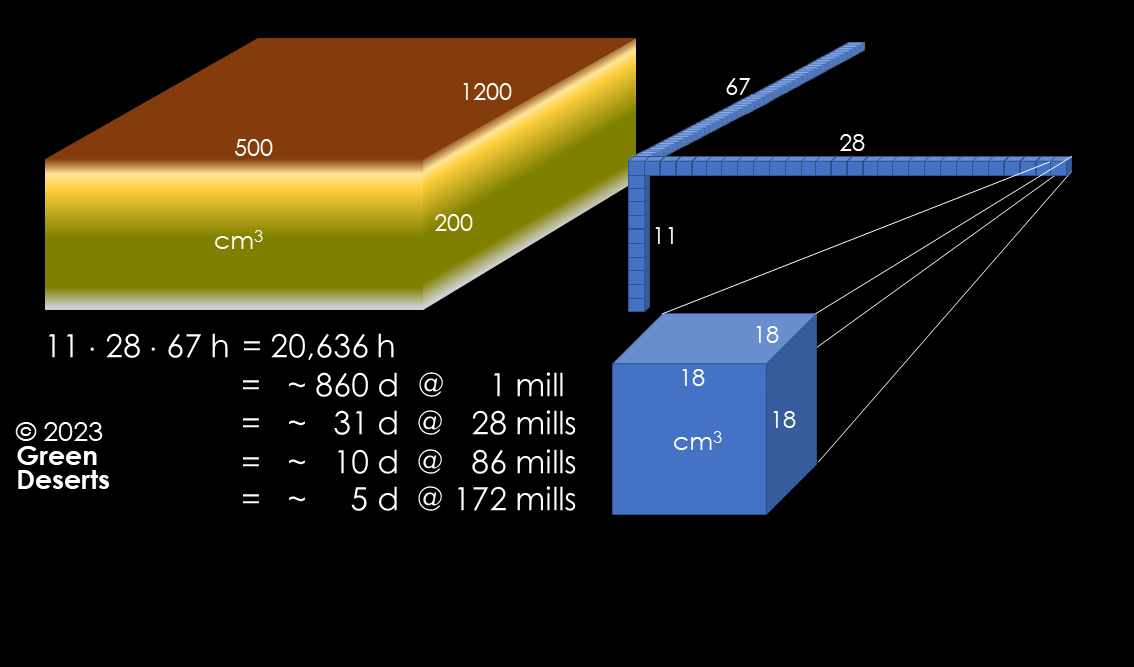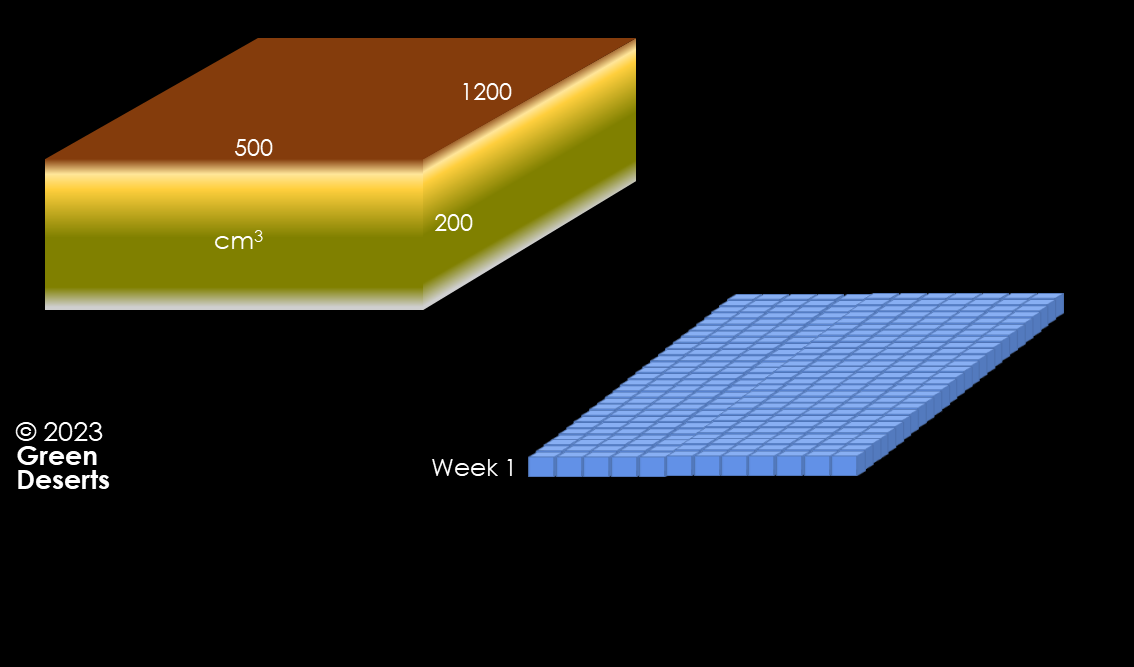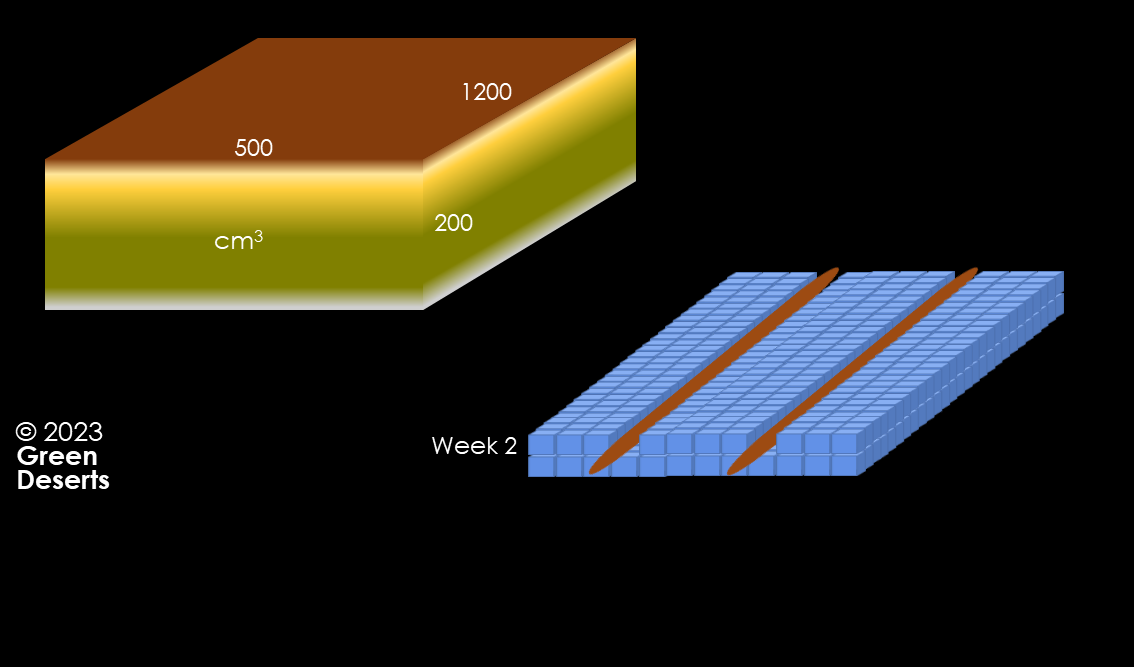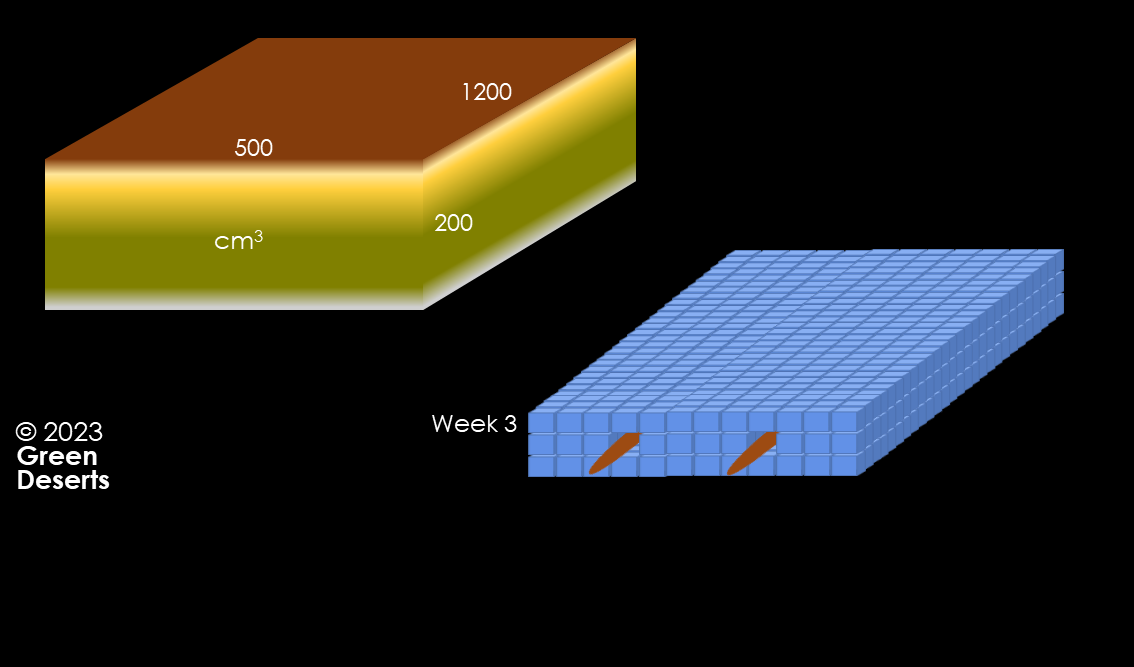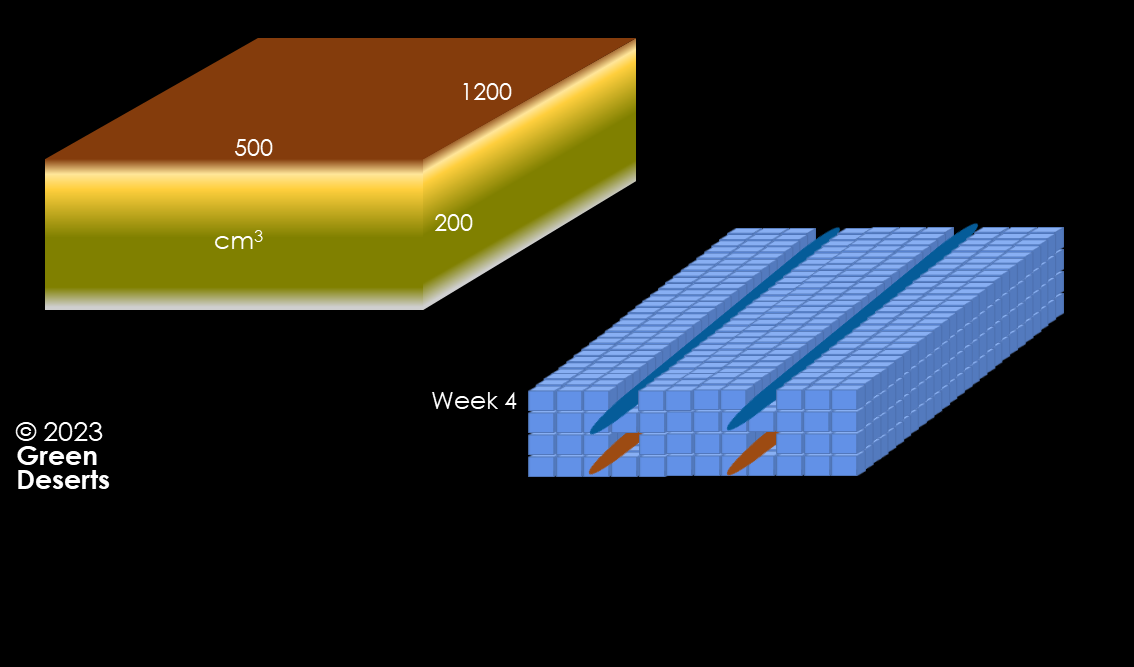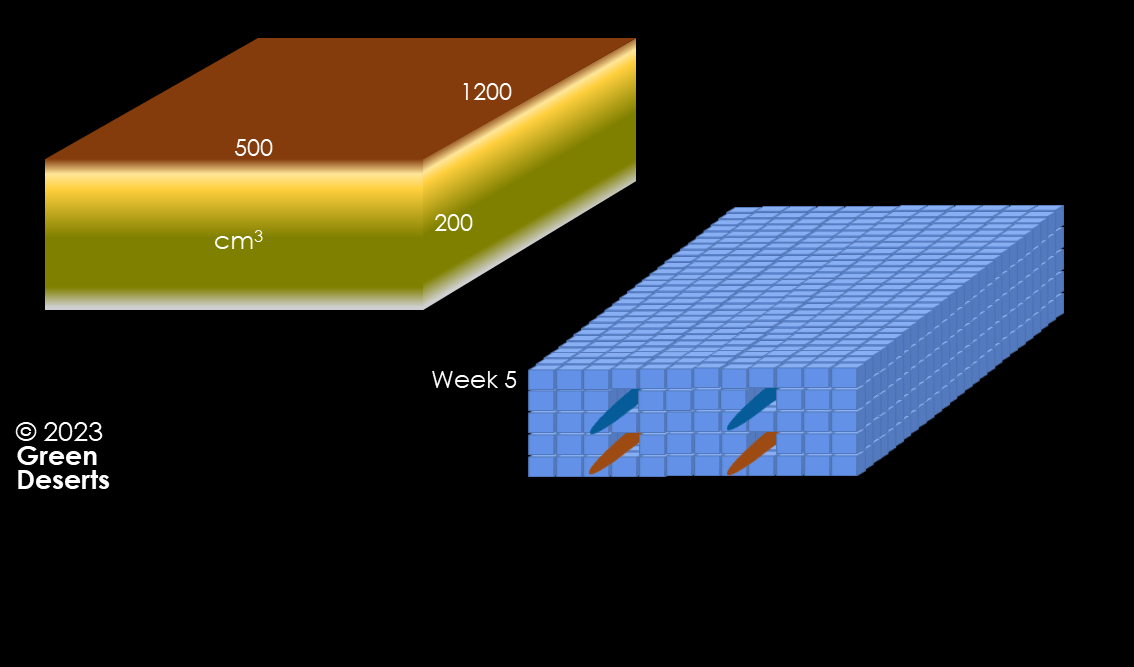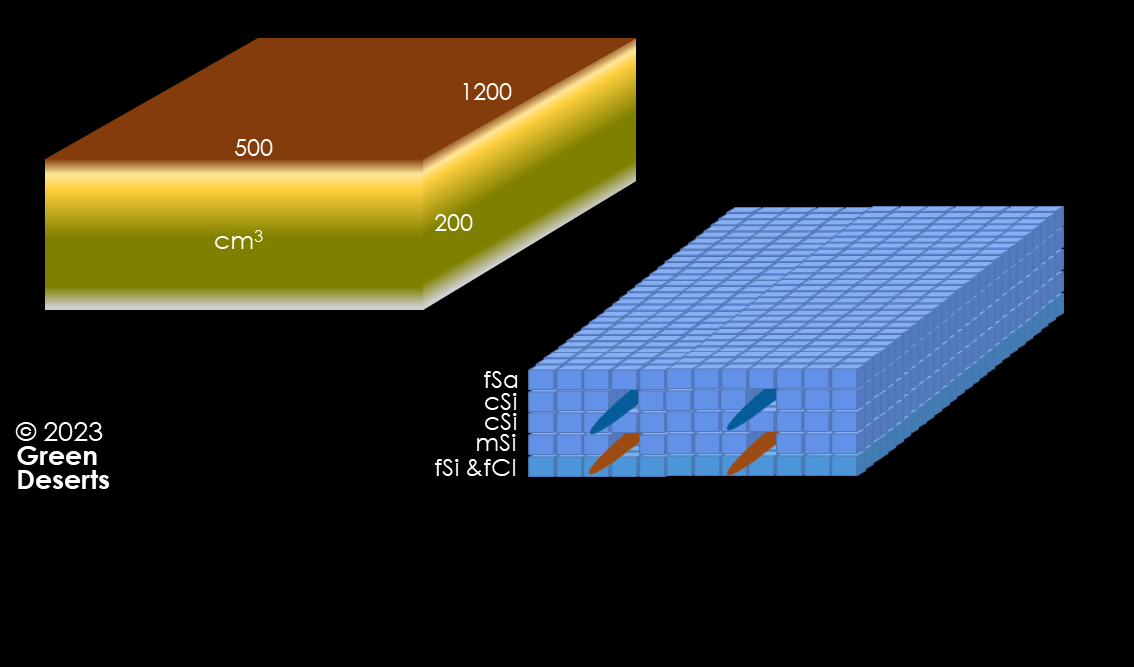Yet, these planetary mills have a limited output in size and volume. Nevertheless, they already demonstrate what terraforming could really look like. And demanding projects like ‘Green Deserts’ could foster the need for their improvements or upgrades for mass production scenarios.
Currently, some planetary mills are capable of converting 6 l of soil material per hour. That corresponds to a cube with side length of 18 cm in width, depth, or height, respectively. When assuming a root depth of 2 m, one planetary mill could provide the filling material for a base of 5.5 by 5.5 square centimetres per hour. Accordingly, a base of 1 by 1 sqm could be filled in about 330 hours, which are two weeks. Multiplied by 60, the basement for a solar greenhouse (i.e. 60 sqm) can be provided in a time frame of about 28 months, or two years and four months, respectively.
But if there were 28 planetary mills, it would only take a month for setting up the basement of one greenhouse. And this time span could be used for subsequently filling layer by layer and also for installing all the necessary infrastructure like freshwater and manure tubes. And after having finished setting up the first greenhouse, the 28 planetary mills can be re-used for transforming the next basement.
Accordingly, even with today’s limited capabilities, setting up such basement for a solar greenhouse seems plausible and manageable. And the more planetary mills are available, the more greenhouses can be built up simultaneously.
